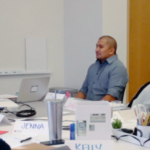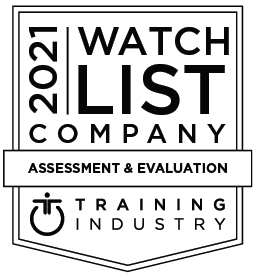How video recording makes you a better speaker
Rebellions arise in the most unlikely places. Several years ago, I experienced a rebellion of sorts in a workshop I led with a group of savvy, tech-minded engineers. The most senior and influential member of the group, a brilliant scientist and seasoned thought leader, had decided that, for her, content was everything and delivery skills were best left to those in sales and marketing.
The last thing she wanted to do was record herself speaking since it would, in her opinion, be a waste of time.
“Humor the trainer,” I asked her with a smile. “Let’s treat this like an experiment. This is your opportunity to prove me wrong.” As we do in most Mandel workshops, I video recorded her and the rest of the participants presenting on a topic they were familiar with. Then, together as a group, we watched the playback without sound, so they could focus on the impact of their non-verbal communication.
She may have been an expert in her field, but little in her video suggested credibility. Her posture was closed and awkward, she was stiff, and her fidgeting varied between twisting her wedding ring and wringing her hands.
Her reaction when she saw herself was swift and intense, “Oh my. Now I get it.”
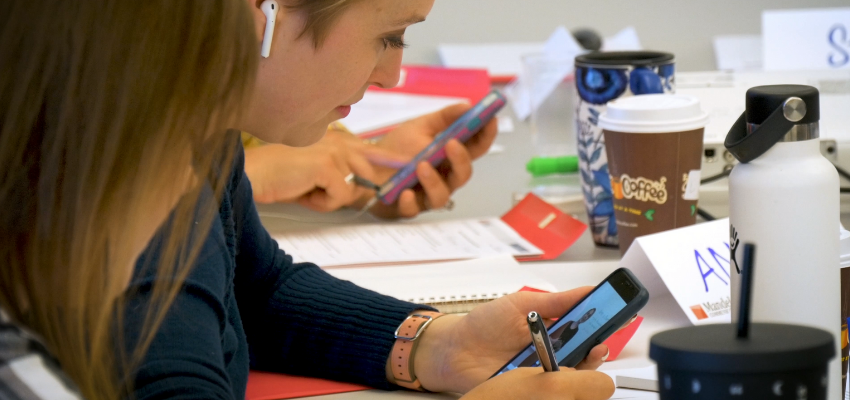
Seeing Is Believing
When do you really notice someone’s presentation skills? That’s easy. When they’re bad. When they’re a distraction.
Yes, ultimately your content is what matters. But if you have engaging delivery skills, not only will people actually listen to what you have to say, but you’ll also be perceived as smarter and more credible while saying it. Seeming at ease and confident while presenting implies a depth of knowledge, no matter how much of an expert you are underneath.
In my 20 years as a presentation skills coach, I’ve learned that ineffective presentation skills won’t change until you can actually see yourself in action.
This is the power of video feedback.
Video Recording Provides Results
Video recording practice with expert coaching is the secret to breaking down resistance, spotlighting the negative impact of old behaviors, and seeing the benefits of the new ones.
In this blog, you can explore how coaching-driven training with video feedback can help you build effective, new presentation skills by:
- Expanding your presentation comfort zone
- Seeking a safe environment + video recording = behavior change
- Using video playback for maximum impact
Expand Your Comfort Zone
New behaviors can feel awkward and unnatural, no matter how effective they may be. Neuroscience tells us that mild stress improves performance, but if you feel too uncomfortable you resist, your progress stalls, and nothing changes.
There’s been a lot of recent work done on comfort zones. In Andy Molinsky’s bestseller, Reach, he describes how the first challenge of acting outside your comfort zone feels “fake, foreign, and false.”
It’s exactly this feeling that creates the biggest obstacle to change. Video lets you see what your audience actually experienced, making it much easier to move forward and expand your presentation comfort zone.
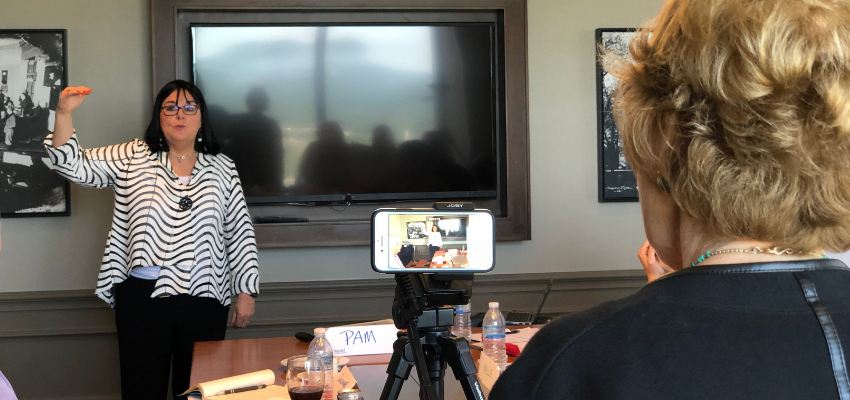
Resistance Is Futile
I coached a seasoned Australian CMO for an upcoming speech, and after we recorded his planned opening, I asked him to do a second take. This time I asked him to purposefully exaggerate his energy two to three times over what he had initially done, a proven Mandel technique that helps people get out of their head and try a new skill outside their comfort zone.
He refused. Adamantly.
“Why do you Americans think we Australians all have the same over-the-top personality as Crocodile Dundee?” Not only was he irritated, he was a bit offended. He felt the energy in his first take was about right.
Alright. Let’s look at the recording.
Shaking his head, he said, “I had no idea that I came across so boring.”
Again, that’s the thing about video feedback; you bridge the disparity between what you experience and the reality of what your audience experiences. By the way, we went on to have a very productive coaching session and his speech was a great success.
Safe Environment + Video Recording = Behavior Change
Public speaking anxiety affects 73% of the population according to The National Institute of Mental Health. People have an underlying fear that they’ll be negatively judged by others, which makes trying new presentation behaviors at work feel too dangerous.
To expand your presentation comfort zone, you need a safe, risk-free place where you can learn, experiment and, very importantly, experience the new results via video review. For example, learning to pause is an essential composure skill, making you feel fully present and in control. Yet research offers that the most conversational speech consists of mostly short pauses (around .20 seconds). Skilled presenters often pause for two to three seconds, or even longer.
But unless you can practice pausing in a safe place and then review the video, you’ll feel that’s too long and too awkward.
Do I Really Look Like That?
Yes. You do.
And you sound like that too. Get over it.
Standing in front of a group to speak is bad enough. Add a video camera? It’s painful. The worst part is viewing your first recording. You’ll be surprised by what you see, and initial reactions are often very personal. In fact, when I see myself on video I think, “Hey…how did my dad get up on that screen?” or “I really need to exercise my core!”
Then you’ll quickly see the objective reality of your presentation capability. Most people initially focus on what’s not working in their presentations and this new objectivity transforms even the most resistant speakers into eager learners. This is why we hit record early on in Mandel workshops.
You might think discomfort with video recording is difficult to get over. It’s not. Once you start to apply the coaching, see yourself as others see you, and witness real improvement, the camera quickly becomes your friend.
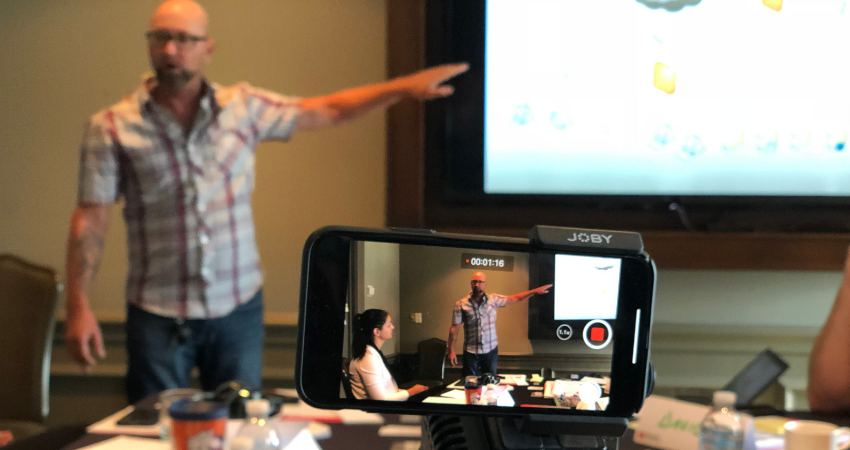
It Starts With Self-Awareness
Video gives you a baseline of your default presentation behaviors (or lack thereof).
These are your habits, bad and good, that happen automatically when feeling uncomfortable under pressure. For example, do “ums” prevent you from pausing to think and breathe? Does closed, fidgety posture make you look anxious? Do you sound nervous because you’re speaking too fast?
Until you become self-aware of your default behaviors and their impact, you’ll be stuck in your old comfort zone.
Train Like an Athlete
Video feedback is hardly a new training tool. But with modern video technology, it’s never been more effective. Elite athletes and their coaches use video to not only train proper form and technique, but also to compare themselves with others and fine-tune their movements.
Studies suggest that for more complex skills, it’s the extrinsic information (from outside sources like video recording and coaching) that accelerates the learning process. Experiencing yourself objectively rather than relying on your personal experience is necessary to help achieve best performance levels.
Once you’re able to see your own progression in your recordings, or even compare yourself to others, you’ll be in a better position to expand your presentation comfort zone and make your positive changes more permanent.
Using Video Playback for Maximum Impact
Remember the scientist who watched her video recording without sound and was instantly onboard? In my experience, some of the most impactful video playbacks are the ones that have either no audio or only audio.
Why is this? In their landmark book Inattentional Blindness, Arien Mack and Irvin Rock share their research on how the unconscious brain first processes all auditory and visual inputs before deciding what to allow the conscious brain to see and hear. So while there is high value in reviewing video with sound for overall impact, your brain is going to filter what you experience and important details are often left out.
With the sound off, you can zero in on the visual impact of gestures and movements. We know from body language studies that open movements create a sense of honesty and credibility. Complex thinkers use complex hand gestures — they are not stiff or frozen.
With audio only, you can easily focus on issues related to vocal volume and variation, speech clarity and pace, and the use of non-words and filler words like “um,” “ah,” “like” and “you know.”
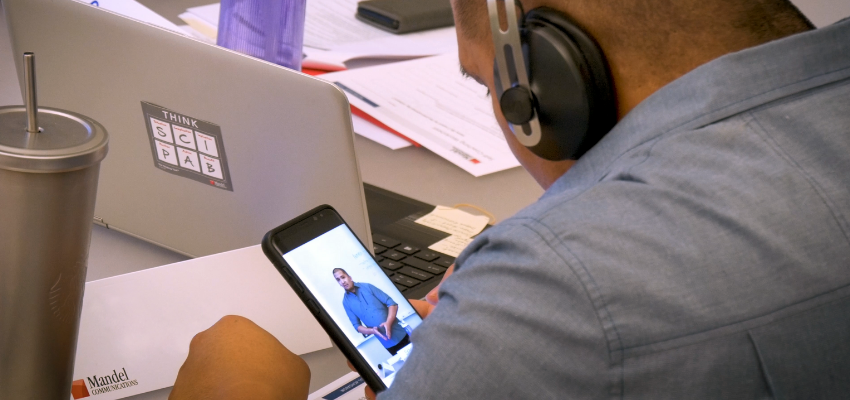
Pay Attention to Your Composure Skills First
It’s common to want to “fix” all of the problematic behaviors you see on your video all at once. Don’t. In my experience it’s best to focus on one or two things at a time or you’ll be overwhelmed and discouraged.
Where should you start? Focus on one of the skills that help you maintain your composure under pressure:
- Pause – This helps you think and breathe in the moment. (Check out the blog posts related to pausing on Mandel.com.)
- Sustain eye contact – You’ll feel a natural conversational connection with your audience.
- Keep an open posture – You’ll negate the impact of stress on your mind and body. (Don’t believe it? Check out Amy Cuddy’s top rated TED Talk and her bestselling book Presence.)
Once you master those skills, making them a default behavior, you can use additional video review to guide your growth as a presenter.
Results You Can See & Measure
Want to measure the impact of your training investment? Learners are video recorded up to seven times in Mandel workshops. Starting with your baseline video, you can measure your improvements from start to finish. And this shouldn’t stop when you’re back on the job. Look for opportunities to record yourself in action with your smart device.
Video recordings in a Mandel course make it easy to capture a Level 2 measurement of Kirkpatrick’s model. But if you record and review real world presentations post-workshop, you can reach that elusive Level 3. Combine that with the right business analytics, and you could even make a good case for a Level 4 evaluation.
What Are You Waiting For? Most successful speakers started out stuck in their old presentation comfort zones.
They had key default presentation behaviors that were either missing or needed to be improved. They avoided presenting whenever they could, and when forced, muddled through while making excuses about not liking to present – all to the detriment of their career and self-confidence.
Much to their happy surprise, once these speakers found the courage to expand their comfort zone, they saw that effective presentation skills can be learned and that video recording should be something to embrace and not resist.
If you decide that professional presentation coaching is right for you, be sure to look for training programs that combine expert coaching with extensive video recorded practices. Remember, practice only makes permanent, so you have to practice right.
Mandel is here to help you do exactly that.
Citations (In order of appearance)
Johnson, Megan. “Trouble Coping with Stress Under Pressure? Train Your Brian.” US News and World Report, (September 2010). https://health.usnews.com/health-news/family-health/brain-and-behavior/articles/2010/09/21/trouble-coping-with-stress-under-pressure-train-your-brain.
Molisky, Andy. Reach. New York: Penguin Random House, 2017.
Montopoli, John “Public Speaking Anxiety and Fear of Brain Freezes” National Social Anxiety Center https://nationalsocialanxietycenter.com/2017/02/20/public-speaking-and-fear-of-brain-freezes/
Campione, Estelle and Véronis, Jean.“A Large-Scale Multilingual Study of Silent Pause Duration.” ISCA Archive, Speech Prosody, (April 2002). https://www.isca-speech.org/archive_open/sp2002/sp02_199.pdf.
Zandan, Noah. “How to Stop Saying ‘Um,’ ‘Ah,’ and ‘You Know.” Harvard Business Review, (August 2018). https://hbr.org/2018/08/how-to-stop-saying-um-ah-and-you-know.
Parisi, Fabio and Napolitano Salvatore. “Sports Skills in Youth Volleyball by Video Analysis Teaching Method.” Procedia – Social and Behavioral Sciences, 117 (2014) 436-441. https://www.sciencedirect.com/science/article/pii/S1877042814017716.
Arien Mack and Irvin Rock “Inattentional Blindness: An Overview.” MIT Press (1998) http://journalpsyche.org/files/0xaa59.pdf
Wezowski, Kasia. “6 Ways to Look More Confident During a Presentation.” Harvard Business Review, (April 2017). https://hbr.org/2017/04/6-ways-to-look-more-confident-during-a-presentation?autocomplete=true.
Novack, Miriam and Susan Goldin-Meadow. “Learning from Gesture: How Our Hands Change Our Minds.” Educ Psychol Rev 27 (2015): 405-412. https://goldin-meadow-lab.uchicago.edu/sites/goldin-meadow-lab.uchicago.edu/files/uploads/PDFs/2015_Novack_GM.pdf.
Cuddy, Amy. “Presence: Bringing Your Boldest Self to Your Biggest Challenges.” Little, Brown, &Co. (2015) https://www.ted.com/talks/amy_cuddy_your_body_language_shapes_who_you_are?language=en
“The New World Kirkpatrick Model,” Kirkpatrick Partners, LLC. Accessed October 14, 2018. https://www.kirkpatrickpartners.com/Our-Philosophy/The-New-World-Kirkpatrick-Model.

